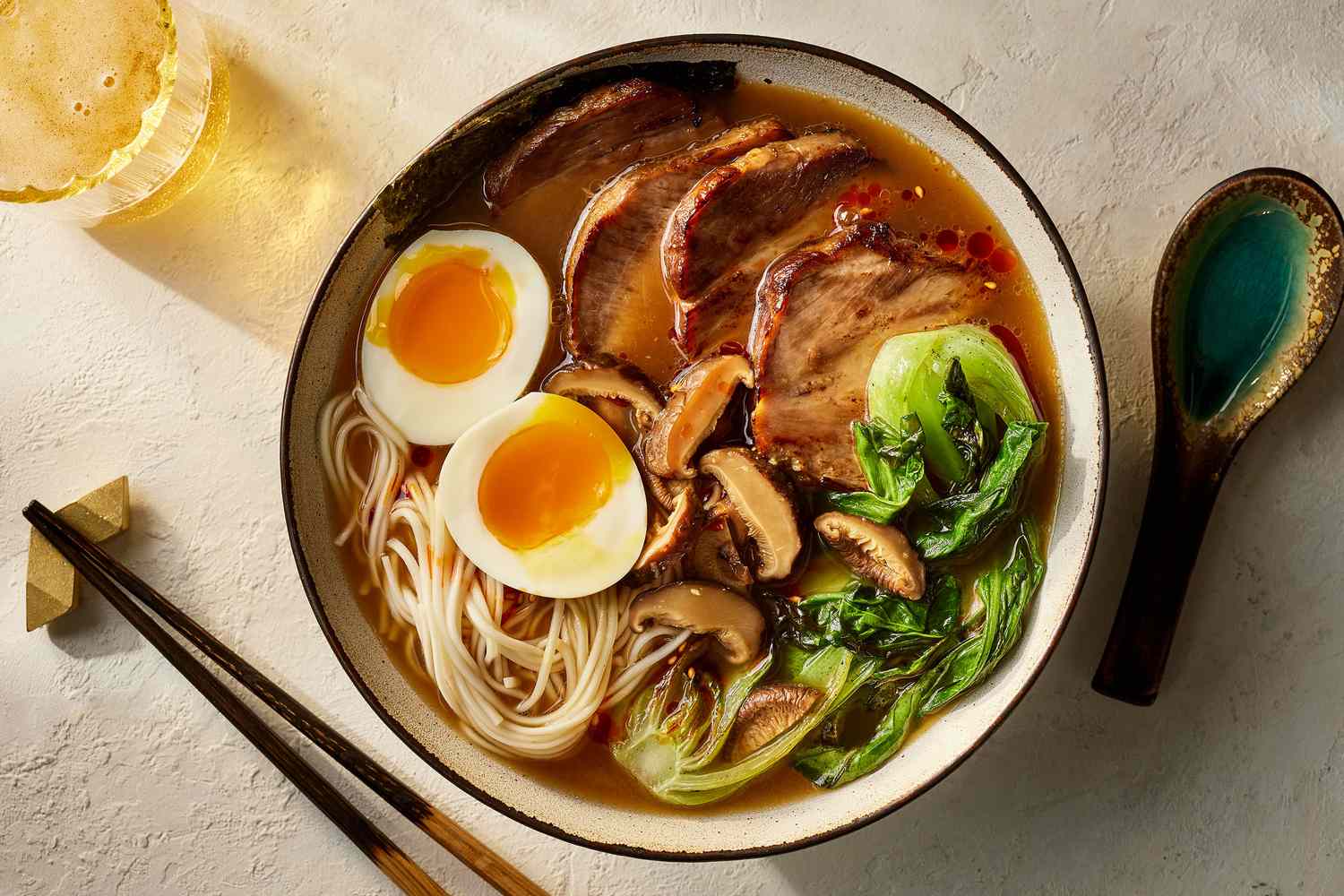
23 interesting facts about Ramen
- 👁️ 304
Ramen, a dish that has transcended its humble origins to become a global culinary sensation, is much more than just a simple noodle soup. With roots in Japan, its complex flavors, varied textures, and almost infinite variations have captivated food enthusiasts around the world. From its rich broths and chewy noodles to the vast array of toppings that can include anything from sliced pork to boiled eggs, ramen offers a deeply satisfying eating experience. Each region of Japan boasts its own version, reflecting local flavors and ingredients, making ramen a diverse and versatile dish. Let’s dive into the savory world of ramen, exploring some fascinating facts about its history, preparation, and cultural significance.
- Ramen is believed to have originated from China and was introduced to Japan in the late 19th or early 20th century.
- The word “ramen” is derived from the Chinese word “lamian,” which means “pulled noodles.”
- There are four main types of ramen broth: shoyu (soy sauce), miso (soybean paste), shio (salt), and tonkotsu (pork bone).
- Instant ramen was invented by Momofuku Ando in 1958, revolutionizing the way people consume this dish worldwide.
- The city of Sapporo is famous for its miso ramen, often garnished with sweetcorn, butter, bean sprouts, and pork.
- Ramen noodles are made from wheat flour, water, salt, and kansui, a type of alkaline mineral water that gives the noodles their characteristic texture and color.
- Fukuoka is known for its Hakata ramen, featuring a rich tonkotsu broth that is boiled for several hours to achieve its creamy consistency.
- Ramen shops in Japan, known as “ramen-ya,” range from small, family-run establishments to large chains.
- Toppings for ramen can vary widely but commonly include sliced pork (chashu), green onions, bamboo shoots (menma), and seaweed (nori).
- Some regions in Japan offer unique ramen variations, like the curry ramen found in Hokkaido.
- The slurping sound made while eating ramen is considered polite in Japan, indicating that the dish is being enjoyed.
- The first dedicated ramen museum, the Shin-Yokohama Raumen Museum, opened in Yokohama, Japan, in 1994.
- A serving of ramen can be customized to individual tastes, with diners often asked to choose the firmness of the noodles, the strength of the broth, and the level of oil.
- Ramen bowls are specifically designed to enhance the eating experience, with shapes and sizes varying depending on the type of ramen served.
- Tsukemen, a variation of ramen, involves serving noodles separately from the broth, allowing diners to dip the noodles into the soup.
- In addition to pork, ramen broths can also be made from chicken, beef, or seafood.
- The world’s largest ramen restaurant chain, Ichiran, is known for its focus on tonkotsu ramen and individual dining booths.
- Soy sauce was the first flavored instant ramen, introduced following the plain, salt-flavored version.
- Ramen chefs often train for many years to master the art of broth-making and noodle preparation.
- Specialty ramen shops may offer limited-time seasonal variations, incorporating ingredients like truffles or unique seafood.
- In Japan, some ramen chefs are considered celebrities, known for their innovative dishes and contributions to the culinary world.
- Ramen has inspired numerous food competitions and festivals, both in Japan and internationally.
- The annual consumption of instant ramen globally is in the billions, showcasing its popularity as a quick and tasty meal option.
Ramen, with its rich history and intricate flavors, has evolved from a simple noodle dish to a cultural phenomenon that resonates with food lovers across the globe. Its versatility and the craftsmanship involved in its preparation have elevated ramen to an art form, celebrated in countless variations from street food stalls to high-end restaurants. The depth of flavor, variety of ingredients, and the ritual of eating ramen continue to contribute to its enduring appeal. As we explore the myriad tastes and traditions of ramen, we’re reminded of the dish’s unique ability to bring people together, offering comfort, satisfaction, and a taste of Japanese culture.
Ramen, a dish that has transcended its humble origins to become a global culinary sensation, is much more than just a simple noodle soup. With roots in Japan, its complex flavors, varied textures, and almost infinite variations have captivated food enthusiasts around the world. From its rich broths and chewy…